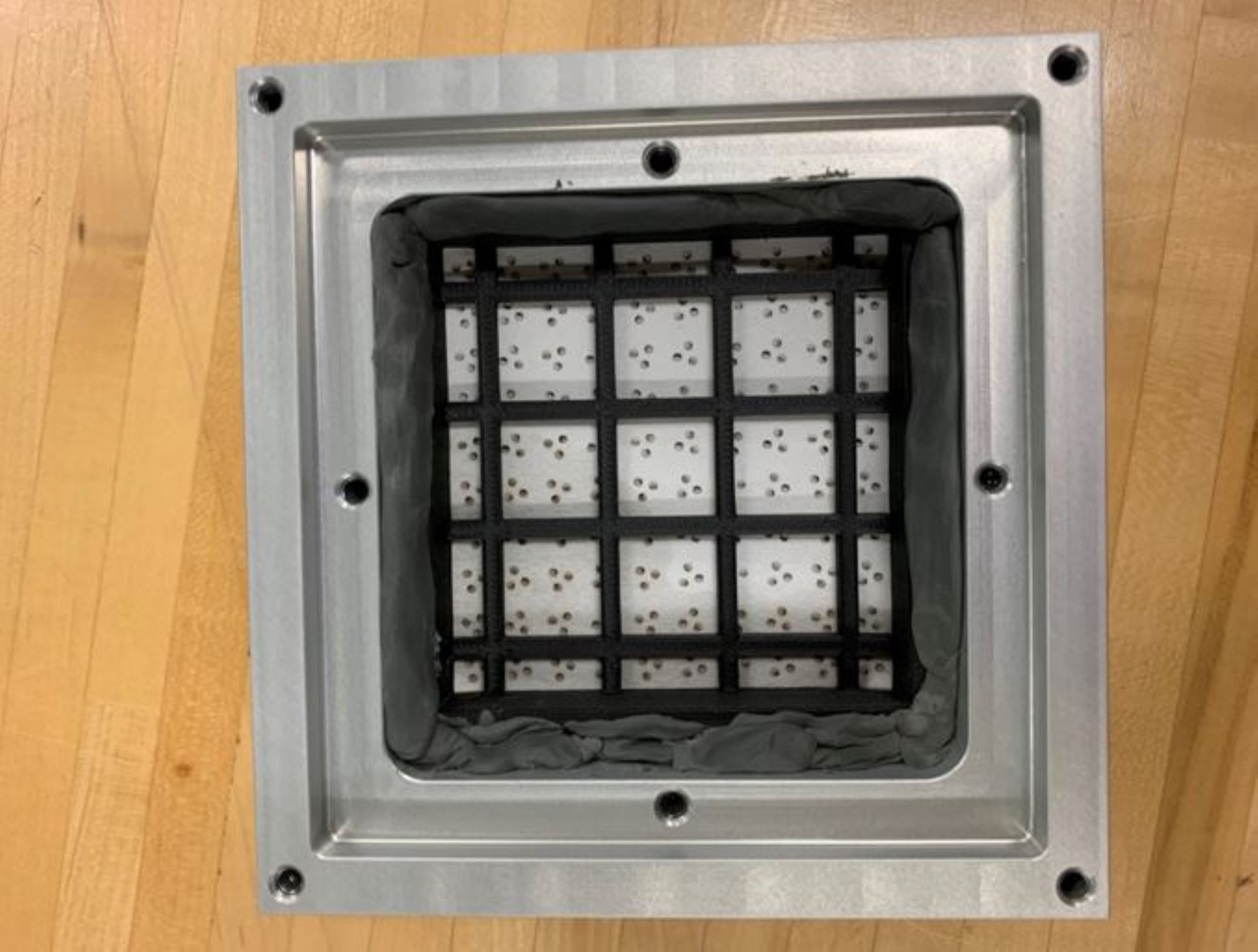Search
mechanical and fluid systems

Liquid Sorbent Carbon Dioxide Removal System
NASA's Liquid Sorbent Carbon Dioxide Removal System was designed as an alternative to the current CO2 removal technology used on the International Space Station (ISS), which uses solid zeolite media that is prone to dusting, has a low absorption capacity, and requires high regeneration temperatures and frequent maintenance. Motivated by CO2 removal systems on submarines, NASA innovators began investigating the use of liquid sorbents. Liquid sorbents have a capacity four times greater than solid zeolites, require low regeneration temperature, and need fewer unreliable moving mechanical parts than solid based systems. While submarine CO2 scrubbers spray an adsorbing chemical directly into the air stream and allow the liquid to settle, NASA's new system uses a capillary driven 3D printed microchannel direct air/liquid contactor in a closed loop system. The Liquid Sorbent Carbon Dioxide Removal System is robust and reliable, while being low in weight, volume, and power requirements. The system is capable of reaching equilibrium when the liquid sorbent surface is being regenerated at a rate equal to the rate of absorption into the liquid.
Environment

Corkscrew Filter Extracts Liquid From Air Charge
In the event of a fire aboard the Orion Spacecraft, the Portable Fire Extinguisher (PFE) can introduce up to three pounds of water into the cabin to extinguish a fire. A filter was needed to work in conjunction with the Orion Fire Safety System (OFSS) to filter water out of the cabin atmosphere after dispersal from the PFE. Airflow introduced to the smoke filter of the OFSS must be dry and free of large particulates for the sorbent material to effectively extract smoke generated by a fire.
These moisture and particulate concerns prompted a re-design of the original filter, especially a filter that could be tested in Earth’s gravity and yielding results that would transfer to a microgravity environment. The newly designed filter uses a multi-phase flow separation method that allows the airflow to develop fully in a helical flow path. This flow path resides within a wicking material used to separate the liquid from the gas (air) while also trapping particulate matter.
Helical flow paths implemented in the filter impart a centrifugal force upon the incoming gas/liquid mixture that develops an asymmetric liquid film on the inner contour of the helix. Upon active airflow, the larger water droplets are inertially forced into the inner contour flow path wall. The flow path walls are made from a wicking material, and all liquid film and liquid droplets that are inertially deposited onto the walls are adsorbed into the filter material. The resulting output flow from the filter is 100% gas.
The Corkscrew Filter has a technology readiness level (TRL) of 5 (component and/or breadboard validation in relevant environment) and is now available for patent licensing. Please note that NASA does not manufacture products itself for commercial sale.



